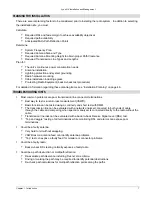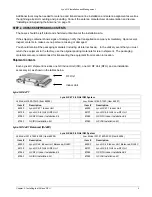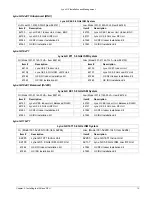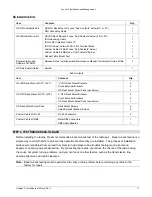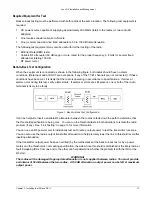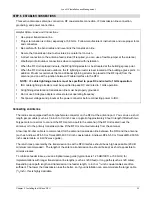
Lynx.GX Installation and Management
Checking RSL Against Predicted Results
There are two RSL voltages that can be read off the radio.
▪
The IDU front panel has an RSL Test Point for a voltmeter probe.
▪
The RFU also has a voltage test point at the BNC connector.
Both the IDU RSL voltage and the RFU RSL voltage readings are identical: They can range from 0.9 volts for
–90 dBm to 0.05 volts for –5 dBm. The RSL voltage is -Volts RSL (mV)/10 or -10mV per dBm, so that the
readings can range from 0.9 volts for –90 dBm to 0.1 volt for –10 dBm. This unique approach for measurement
voltage makes it possible to read the RSL value directly off the DVM; for example: -60 dBm = 0.6V.
Keep in mind that a higher RSL results in a lower absolute voltage. Therefore, when you are ‘peaking’ an
antenna, you actually are attempting to achieve the lowest voltage. For example, a desired RSL of –50 dBm is
equivalent to 0.5 Volts RSL and, if you were reading 0.7 Volts of RSL (a higher voltage), this would be a lower
(worse) RSL of –70dBm.
Because the maximum error-free receive signal level is –20 dBm, the receiver can produce errors above this
level; however, this level will rarely, if ever, be exceeded in an actual system implementation. See “Calculating
Received Signal Level and Link Budget” on page 51 to calculate the anticipated RSL. However, if cabling the
system back-to-back with inadequate attenuation, permanent damage can occur. Also, extremely short paths
can result in excess RSL.
During anomalous propagation conditions, the RSL can fade up but does not typically increase by more than 10
dB (except in unusual, very long paths, which may increase by 15 dB). This is not something that typically must
be planned, but can cause error conditions if the normal (unfaded) RSL is close to the maximum error-free
specification.
Antenna alignment should let RSL achieve the level calculated in the link budget. If the RSL is optimized but is
approximately 20 dB below the calculated level, it is likely the antennas are aligned on a sidelobe of the
antenna's radiated signal. In such case, you must adjust the antennas in a wide arc in both azimuth and
elevation (at both sides) until the main lobe is located.
See also “Confirm Receive Signal Level (RSL) “ on page 29.
Chapter 2. Installing the IDU and RFU
21

